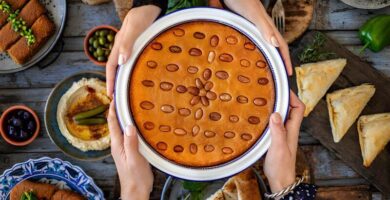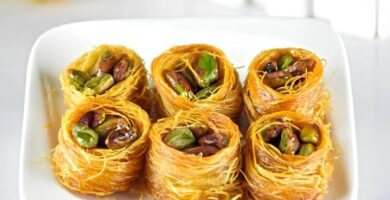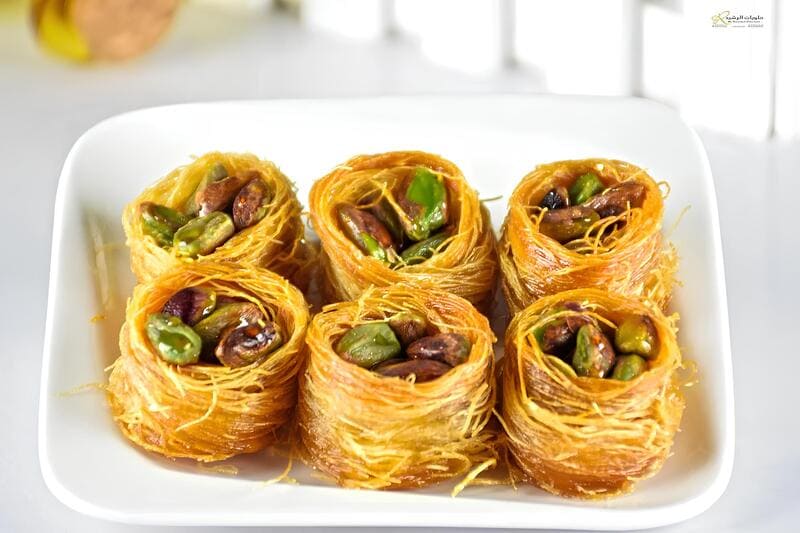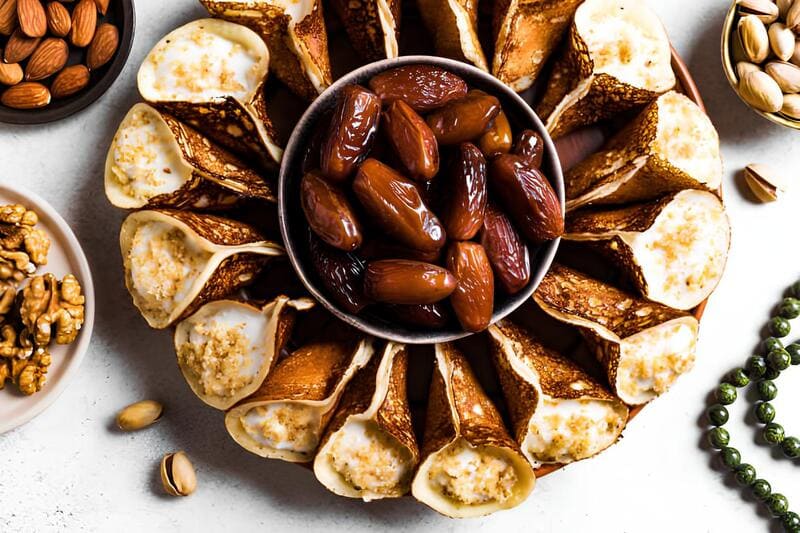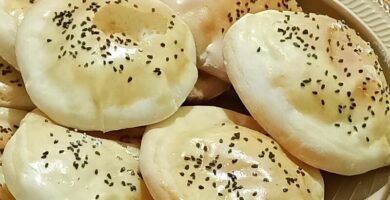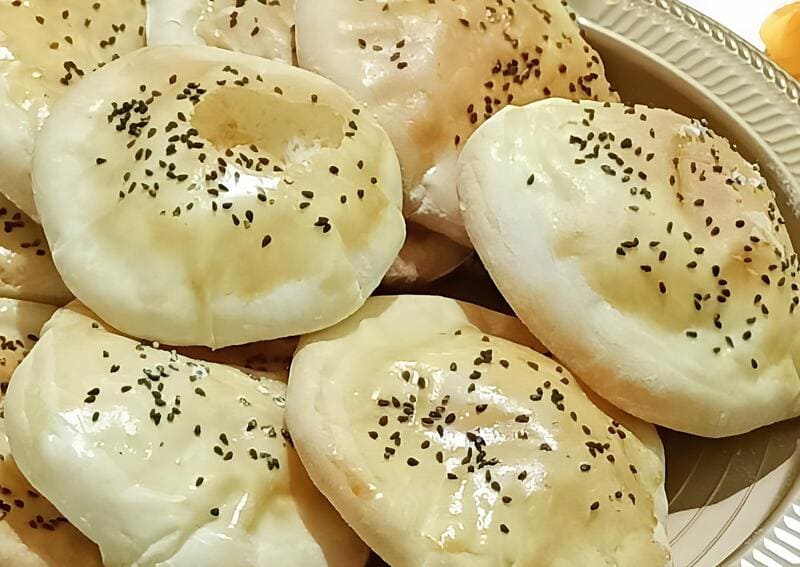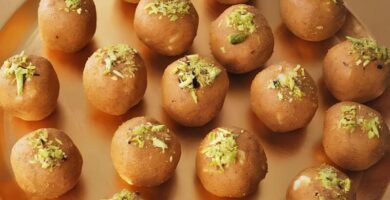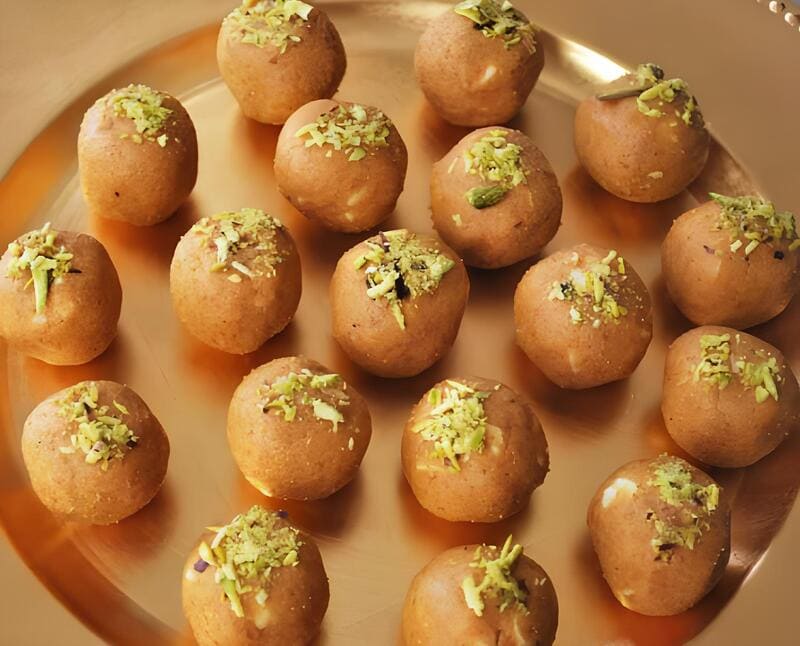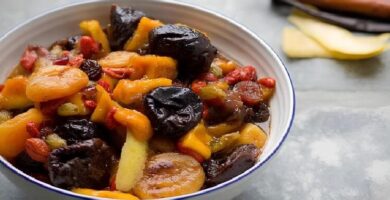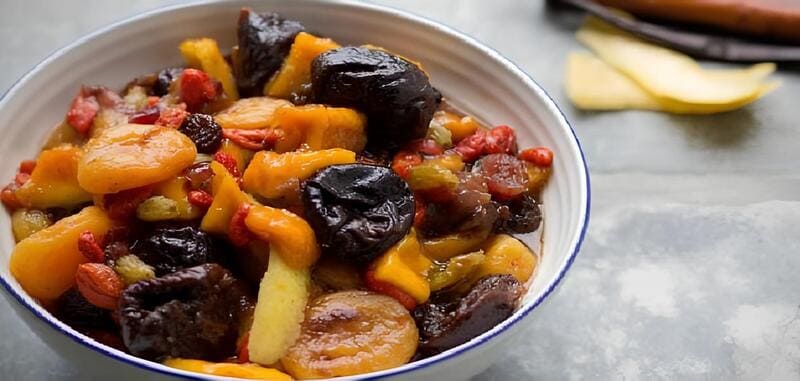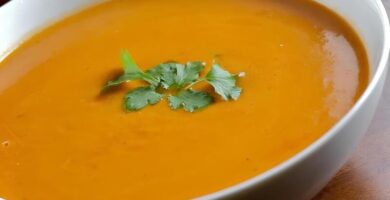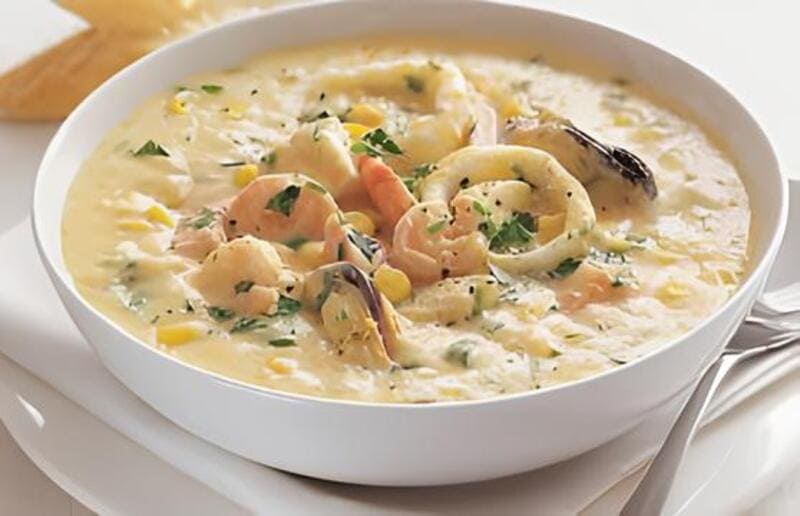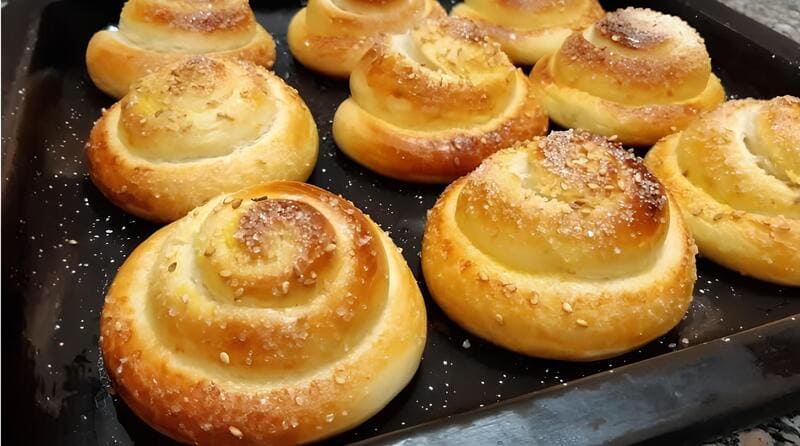
Basbousa, also known as Harissa, Namoura or Revani in different cultures, is a traditional Egyptian dessert that holds a special place in festive occasions and family gatherings. This semolina cake drenched in sweet syrup offers a unique texture that is both moist and slightly grainy, perfectly capturing the essence of Middle Eastern desserts.
The flavors of Basbousa are delightful, with subtle hints of coconut and the richness of ghee permeating each bite. The golden crust with a glossy syrupy top makes it visually appealing and utterly irresistible. If you’re craving a taste of Egyptian culinary heritage, this is a must-try dessert.
Ingredients
- 2 cups semolina
- 1 cup granulated sugar
- 1 cup plain yogurt
- 1/2 cup melted ghee or unsalted butter
- 1/2 cup shredded coconut
- 1 teaspoon baking powder
- 1/4 teaspoon salt
- Whole blanched almonds or hazelnuts (for garnish)
For the Sugar Syrup:
- 1 1/2 cups granulated sugar
- 1 cup water
- 1 tablespoon lemon juice
- 1 tablespoon rose water or orange blossom water
Preparation
- Preheat your oven to 350°F (175°C). Grease a 9×13-inch baking dish with some ghee or butter.
- In a large bowl, mix together the semolina, sugar, yogurt, melted ghee, shredded coconut, baking powder, and salt until well combined.
- Pour the semolina mixture into the prepared baking dish. Spread it evenly using a spatula.
- Score the surface of the mixture into diamond or square shapes and place a whole almond or hazelnut in the center of each piece.
- Bake the Basbousa in the preheated oven for 30-35 minutes, or until it turns a beautiful golden brown.
- While the Basbousa is baking, prepare the sugar syrup. Combine the sugar and water in a saucepan and bring to a boil. Reduce the heat and let it simmer for about 10 minutes. Add the lemon juice and rose water, stir well, and remove from heat.
- Once the Basbousa is out of the oven, immediately pour the hot sugar syrup evenly over it. Allow the dessert to soak up the syrup and cool completely before cutting through the pre-scored lines.
Did you know?
Basbousa is not only popular in Egypt but is also a staple dessert in many countries across the Middle East and North Africa, such as Lebanon, Turkey (where it is called Revani), and Tunisia. Each region often has its unique variation of this delicious treat. The name “Basbousa” itself stems from the Arabic word “besbous,” which means “to pour,” referring to the pouring of the syrup over the baked cake.
Interestingly, Basbousa is praised for its versatility. You can flavor the syrup with orange blossom water, as done in many Lebanese recipes, or infuse the cake batter with a hint of cardamom for a unique twist. Another fun fact is that the calorie content of Basbousa can vary depending on the regional recipe; traditionally, it ranges between 150 to 250 calories per serving, making it a reasonably indulgent dessert option.
For easier preparation, some recipes call Basbousa one of the best beginner-friendly desserts due to its straightforward method and forgiving nature. If you’ve ever wondered how to make Basbousa truly stand out, experiment with different nuts for the garnish or serve it alongside a scoop of ice cream for an elevated experience. This dessert is a testament to the richness of Arabic culinary traditions, blending simplicity and depth of flavor beautifully.
